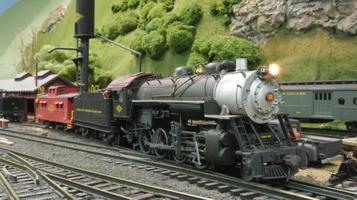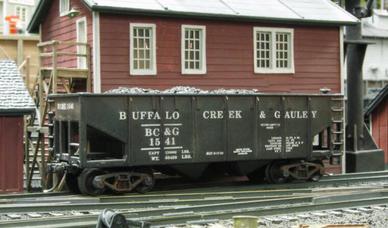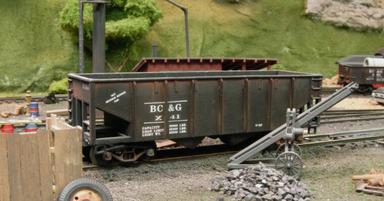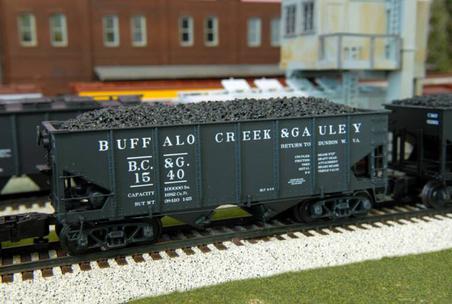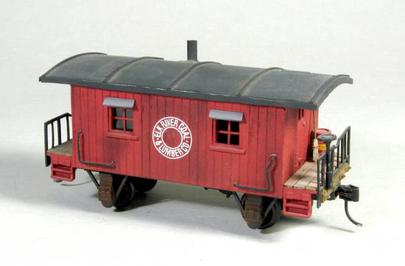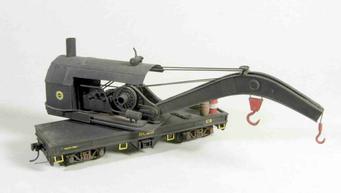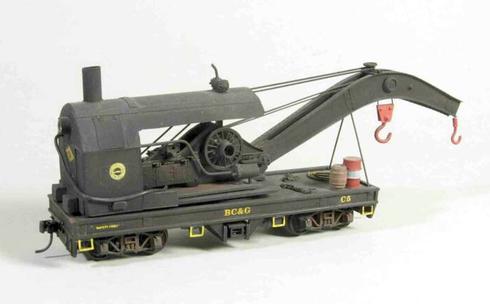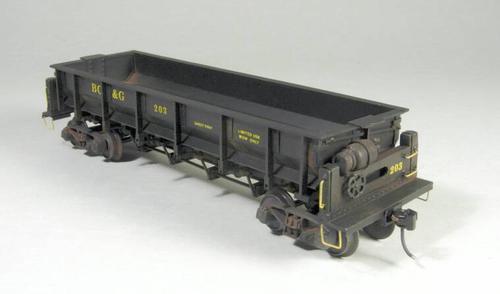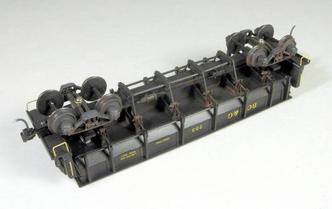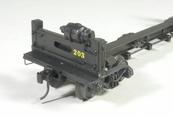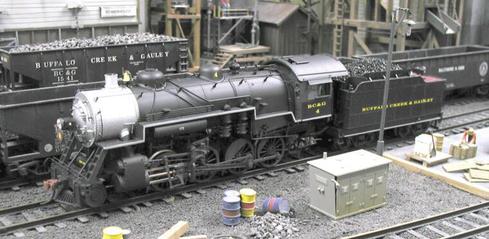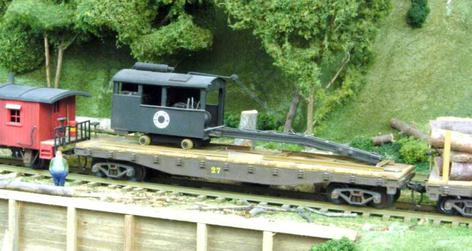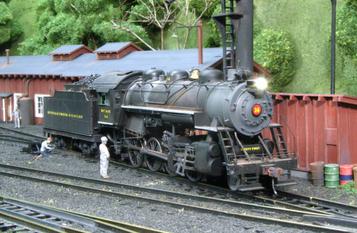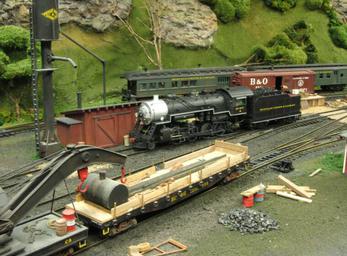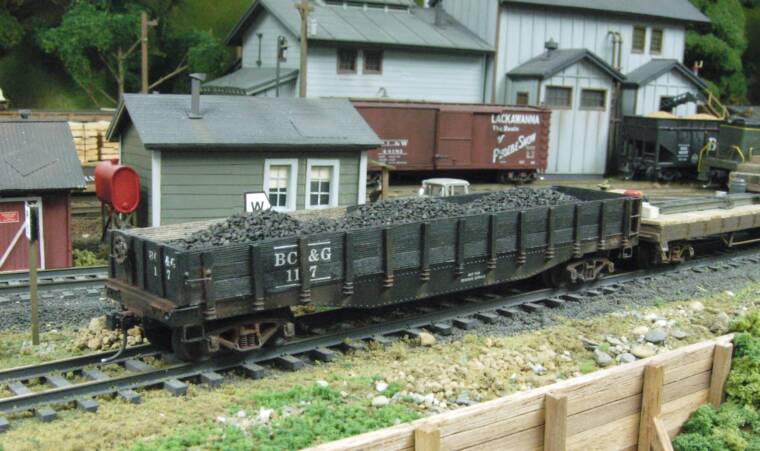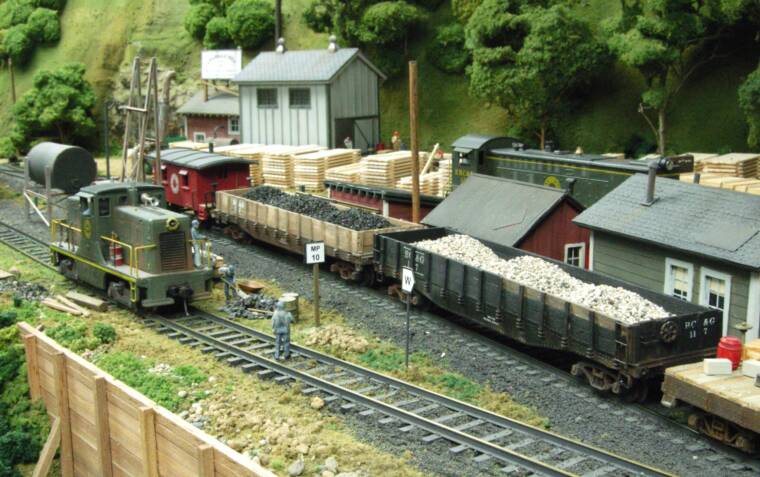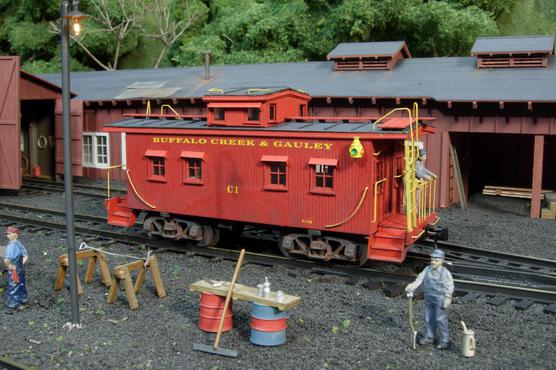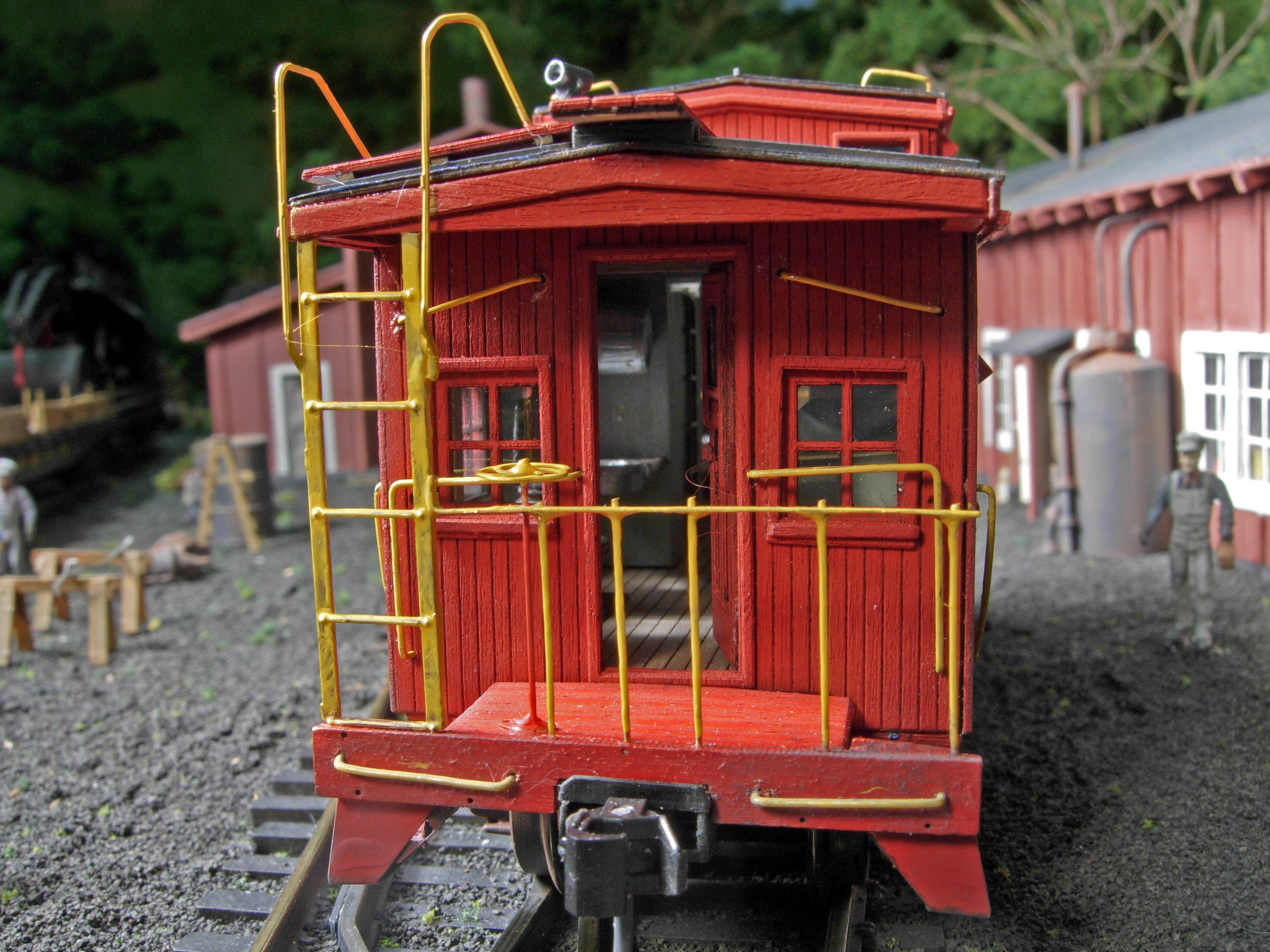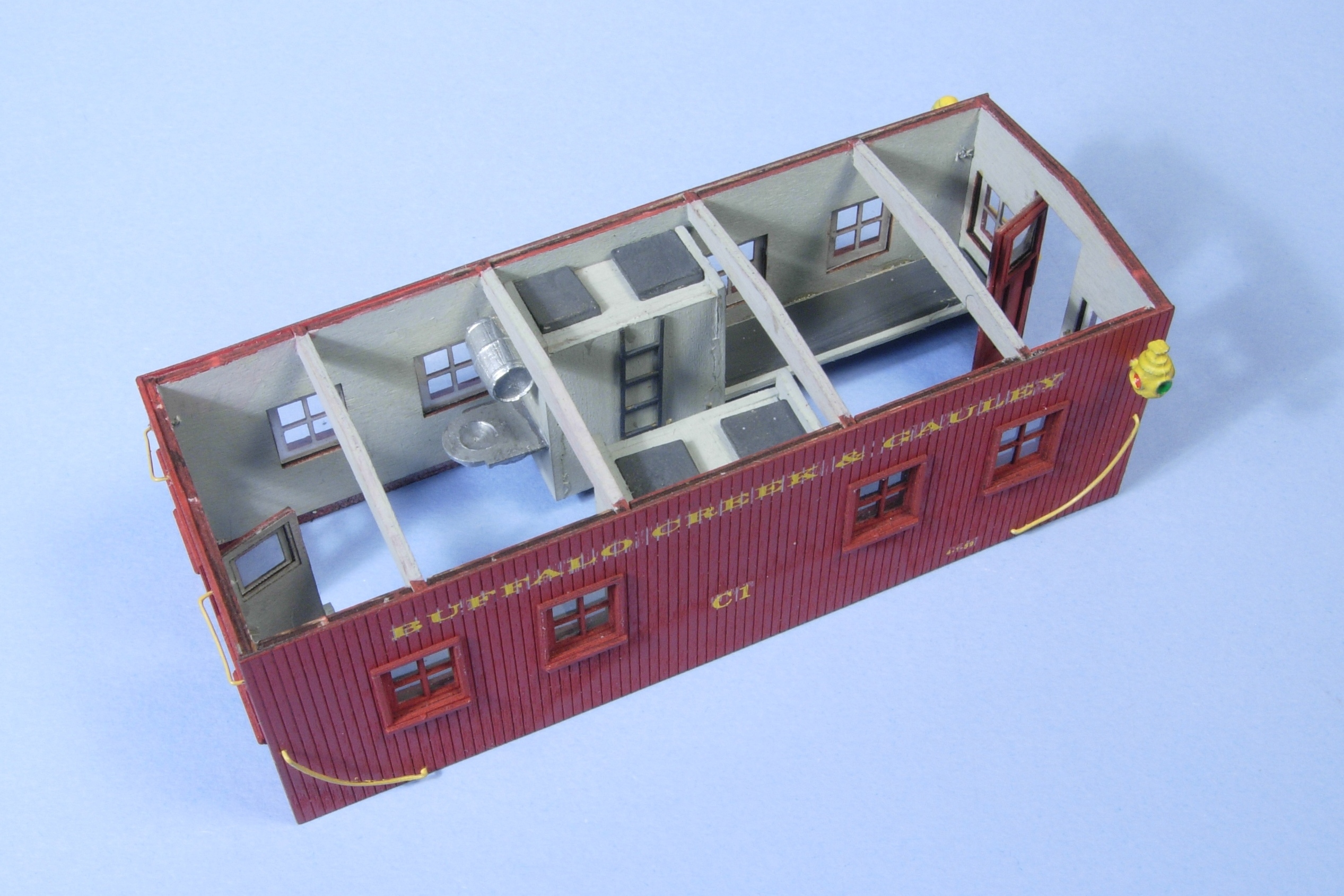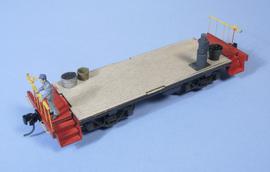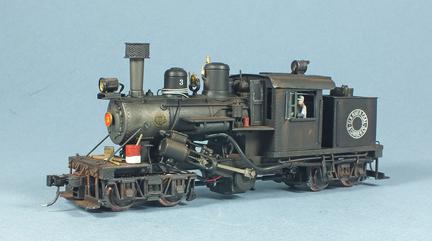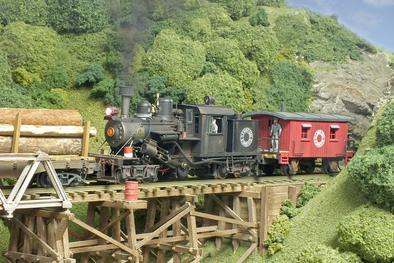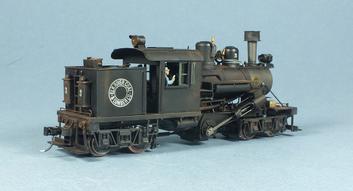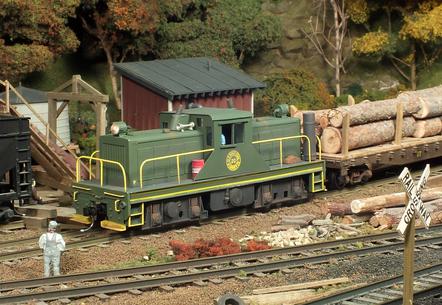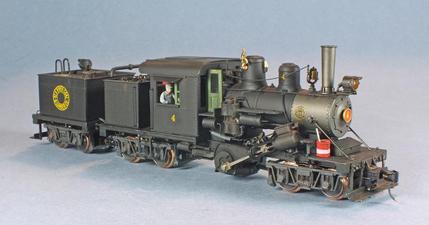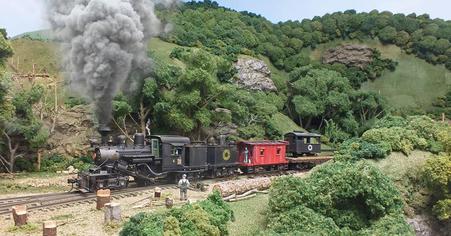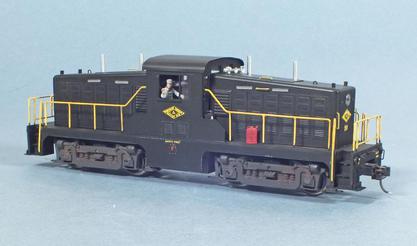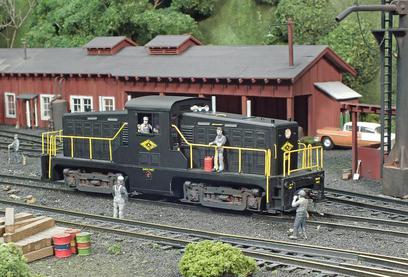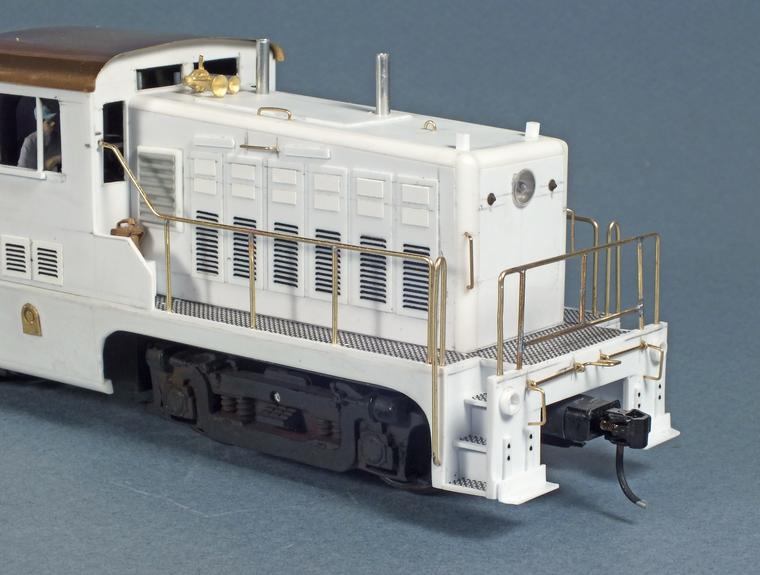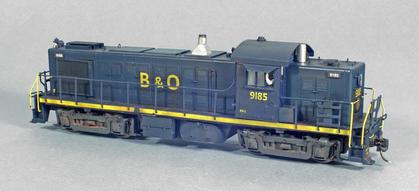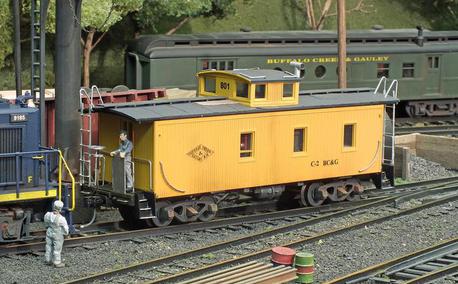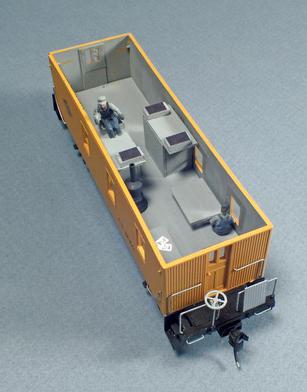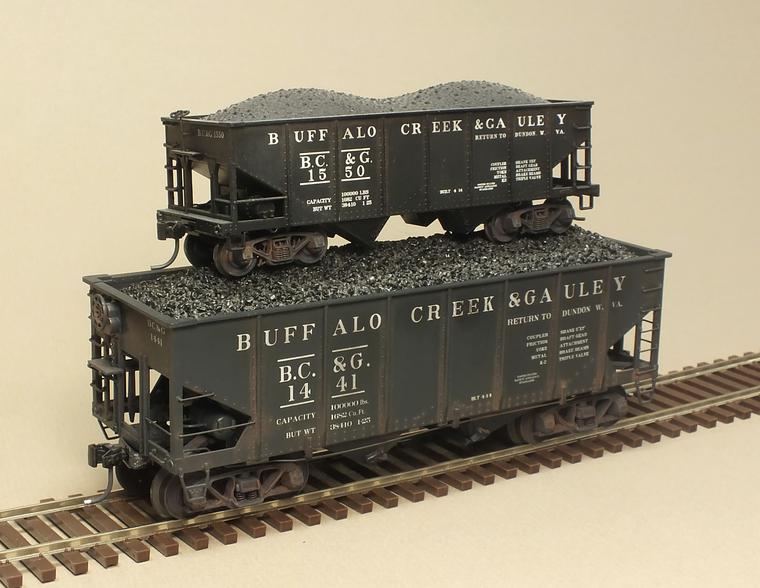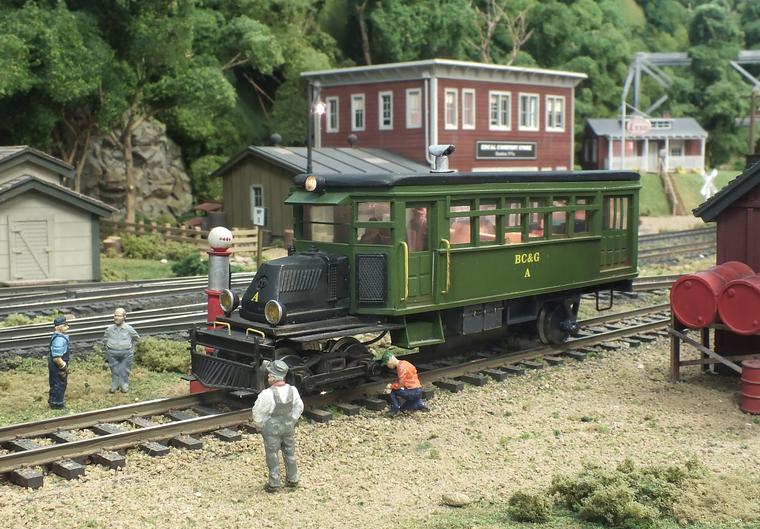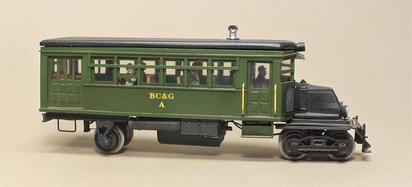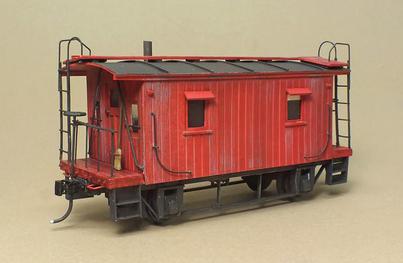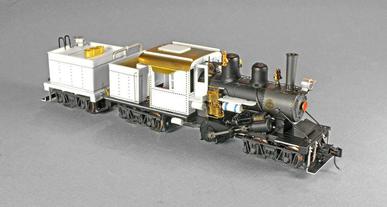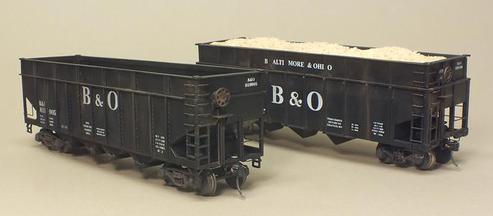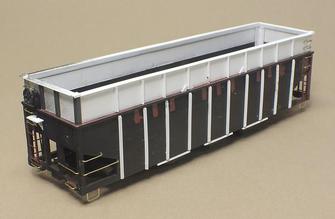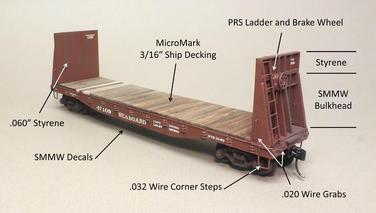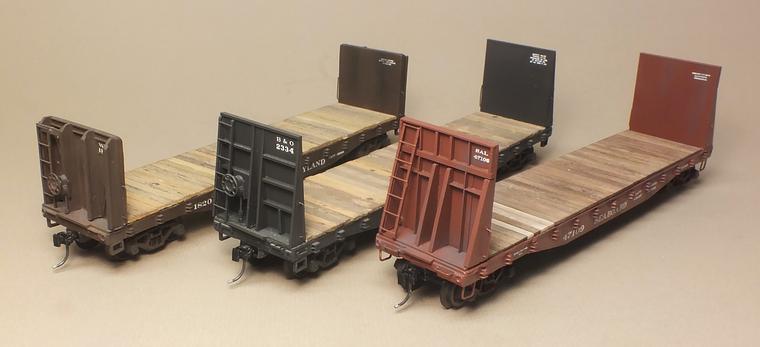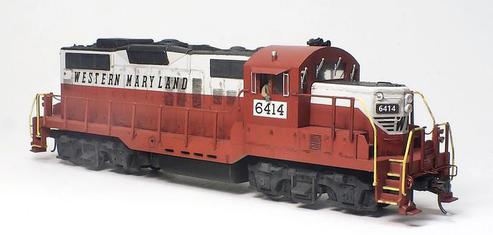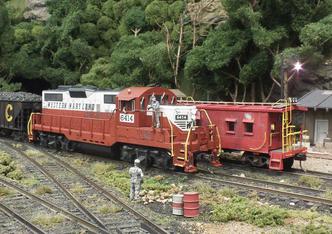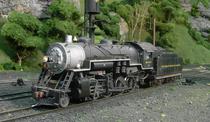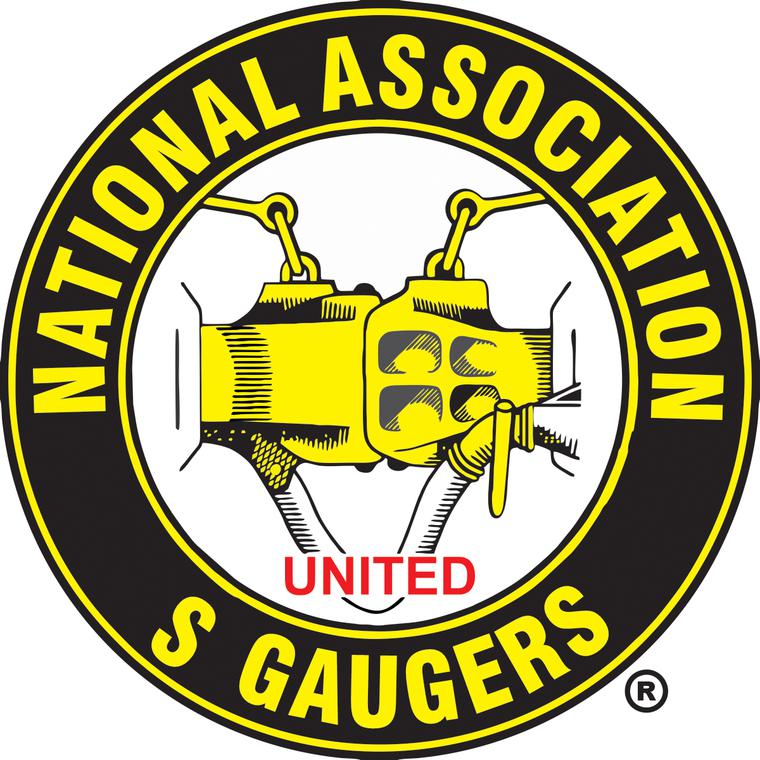MODELING the BC&G in S (1:64) Scale
The decision to model the BC&G as accurately as possible was made early. I wanted anyone familiar with the real railroad to easily recognize the terrain, buildings and trains on the layout. One of the reasons the BC&G is such a good candidate for modeling is that it was relatively small...not many locomotives, a small roster of rolling stock and not many towns were served. Eventually I decided to try to represent every piece of rolling stock on hand during the period I model. Below are many of the BC&G and ERC&L motive power and rolling stock models that I have built and a brief description of how the models were made. In some cases, links are provided to other pages on the website containing prototype photos.
BC&G Locomotives
Rail Bus Motor "A"
Passenger Coaches
BC&G Hoppers
BC&G Combine X-6 was modeled by splicing together halves of two American Flyer heavyweight combines. The baggage doors and truss rods were scratch built. American Models passenger car trucks were installed. The interior has the long dining table of the prototype and a couple of workers sitting at it. New end sills and railings were added.
BC&G and ERC&L Cabooses
CONSOLIDATIONS #4, #13 and #14
All three of the BC&G's Consolidations were modeled from the excellent S Helper Service Consolidations, no longer in production. Prototypically correct details were added and appliances were relocated to more accurately represent the specific prototype. Freelanced modifications to the coal bunkers on the tenders were made on each engine to provide some visual variety. An air tank was added to the pilot of each engine, as was the BC&G's practice. Appropriate number plates were fitted and the engines were repainted and lettered with custom decals.
This model of the BC&G's Mack Model AC rail bus was scratchbuilt in 1991. It is powered by a can motor located under the floor driving the rear wheels through a NWSL gear box. The unit is equipped with a Soundtraxx Tsunamii2 Goose decoder and current keeper. There is a faux floor, seats and passengers.
Clark Side Dump Gondolas
BC&G and ERC&L Cranes
ERC&L 2-Truck CLIMAX #3
At one point the BC&G had 900 'home road' hoppers. I have three different versions of BC&G hoppers on my layout. The first two (left photos below) were made by modifiying American Flyer 2-bay hoppers. I added vertical ribs using Plastruct "T" stock, replacing the corner steps with more realistic open steps and added brake cylinders and rigging. One (#1541) is lettered in the original 'full' Buffalo Creek & Gauley lettering. The second (X41) is lettered the way six of the cars appeared when in MOW service in the last years of the railroad's operation. In reality, X41 was probably the same car as 1541, just repainted for MOW service.
ERC&L Locomotives
In 2008, S HELPER SERVICE introduced a BC&G hopper in four road numbers. It is a beautiful model with exceptional detail throughout and correct BC&G lettering. For anyone interested in modeling the BC&G, this car is for you! A string of them on a 1930s era layout would look great and at least six are needed on a 1950s era layout in MOW service.
Some of the more interesting cars owned by the ERC&L company were the Clark side-dump gondolas. These gons emptied by tipping to the side with the body being tipped to one side or the other by large air cylinders on each end. The ERC&L had 20 or more of these in gob service and then in the late 1950s about six went into MOW service on the BC&G after gob began being moved by truck. It appears that 3 were in service when the road closed. There are no S scale models of this car (although American Flyer built a similar, though crude, automatic dumping car) so I scratch built two of the cars, numbers 202 and 203. I obtained a copy of a 1917 manufacturers general arrangement drawing to guide the construction. The cars are made from styrene and are fitted with S Helper Service's excellent free-rolling trucks. The air cylinders on the ends are 'O' scale items.
ERC&L PLYMOUTH #20
This model of #20 features a body scratchbuilt of styrene fitted to a heavily reworked chassis from a Steam Depot GE 44-tonner. The model is fitted with a Tsunami sound decoder. An article describing how the model was built appears in the Sept/Oct 2016 issue of Narrow Gauge and Shortline Gazette..
BC&G #14 was originally a NYC 0-8-0 switcher and consequently was built with two sand domes. I added a second one to the stock S Helper Service model to create my #14 along with the prototype's front handrails. The generator was also moved to the correct position in front of the stack.
Fortunately, the SHS engines came with both center and high mounted headlights. I used both road and switcher pilots to further vary the look of the engines.
BC&G #4
BC&G #13
BC&G Caboose C-1
This model of C-1 was built from a Lake Junction Models kit. The model was painted to match C-1 the way she appeared in the 1962 and was lightly weathered with chalk.
In order to keep the model from appearing 'empty', a simple interior was included. The interior elements modeled include a sink, elevated water tank, conductor's desk, center cabinets and elevated seats, coal stove, coal bucket, bench and miscellaneous supplies. the door on one end is modeled open to allow seeing the interior. A crewman by Arttista rides on the rear platform.
This model of crane X-5 was scratchbuilt from styrene, brass, cardstock and scrapbox parts with a few cast details, like the generator on the roof, thrown in. The crane swivels on the chassis which started as an American Flyer caboose chassis.
Crane Tender Flat #108
Crane tender flat #108 was built from an American Flyer flat car with wood decking and sides added. The water tank is made from a PVC pipe wrapped in .005 styrene with rivet detail added.
The American log loader was scratchbuilt from styrene and brass. It includes some interior detail. The double-flanged wheels are from N gauge cars. The boom can be raised to display the crane in working position or lowered, as seen here, for transport.
ERC&L Logging Cabooses
The ERC&L operated two old 4-wheel logging cabooses. The model on the left was scratchbuilt with the exception of the car's ends and steps that are from an old Flyer caboose. The sides are scribed styrene and the roof is brass. The axle journals are parts of American Flyer trucks turned 90 degrees with braces added per the prototype photos. The model on the right, the caboose that Raymond Davis used to sleep in when staying overnight in the woods was completely scratchbuilt from styrene with ladders and grabs made from brass rod.
BC&G #14
BC&G coaches #16 and #17 were built by shortening two American Models heavyweight combines and baggage cars and adding circular windows. While not exact representations of the two prototypes, they capture their character. One of the cars is visible in the photo on the right between X-6 and the caboose.
Wood-side Gondolas
Models of BC&G woodside gondolas #116 and #117 were built by adding wood sides and other details to American Flyer flatcar bodies. Details include individual grab irons, new steps, brake wheels, Ace trucks and Kadee couplers. #117 is modeled in a freshly painted condition while #116 is heavily weathered.
The grab irons were fabricated from .020 wire and NBW castings. The steps are 'slices' from a piece of square plastic tubing. Ace bolsters were used to mount the Ace trucks.
The coal and gravel loads are removable and the floors of the cars are detailed.
I built an operating model of Climax #3 starting with a Bachmann On30 Climax, increasing the gauge and scratchbuilding a new cab and fuel bunker. Appliances and detail parts are from several sources. The engine has a Soundtraxx Tsunami "Light Logging" decoder. The engine is a favorite among crews that operation on the BC&G layout! The detailed explanation of how I built this model appeared in an article entitled “Converting An On30 Bachmann Climax To S Gauge Elk River Coal & Lumber Company Climax #3” in the May/June 2015 issue of Narrow Gauge and Shortline Gazette.
ERC&L 3-Truck CLIMAX #4
The information about this most unusual locomotive is sketchy at best but it is believed that this engine was on the roster at one time. Whether it was a logging engine or worked the gob pile at the Rich Run mine is uncertain.
This model was built from a Bachmann On30 2-truck Climax with the scratchbuilt tender and third truck added. An article describing the construction entitled “Modeling A Mysterious Climax”, appeared in NMRA Magazine, November 2014.
For prototype history of BC&G and ERCIL locomotives CLICK HERE
Majestic Mining Locomotives
BC&G (Majestic Mining) WHITCOMB #20
This model of Majestic Mining Whitcomb #20 features a body scratchbuilt of styrene fitted to an American Models Baldwin chassis. The locomotive is fitted with a Tsunami sound decoder. An article on how the locomotive was built entitled “Scratchbuild a Diesel Shell from Styrene” appeared in the January 2017 issue of Model Railroader,
The louvers are Archer Fine Transfer decals. The handrails were scratchbuilt from brass wire. Similar construction techniques were used on the ERC&L Plymouth above.
B&O RS-1 #9185
The Majestic Mining Company leased several locomotives from the B&O. RS-1 #9185 was one of them. This engine was obtained after the merger with C&O and was one of only three RS-1s to ever wear the B&O livery. The shell of the locomotive was scratchbuilt from sytrene in a manner similar to Whitcomb #20 above. The body sits on an American Models RS-3 chassis and is fitted with a Tsunami DCC sound decoder. A description of the model appeared in “Building B&O Alco RS-1 - Twice” in the May 2015 Railroad Model Craftsman.
BC&G Caboose C-2
This model was kitbashed from an American Models off-center cupola caboose. The prototype was an ex-PM caboose and was owned by the Majestic Mining Company but lettered for the BC&G.. A full interior was built into the model. An article on this kit bash project entitled "Modeling BC&G Caboose C-2”, appeared in the September 2016 Railroad Model Craftsman.
All the models I build are in S scale which is 1:64 size or 3/16" = 1 foot. This is a minority scale in that only about 5% of modelers work in this size. An S model is 36% bigger in each linear dimension than an equivalent HO model which gives the S model about 2 1/2 times the volume of the HO model. That's an HO model on the top and an S model below in the photo at right.
S
B&O Chip Hoppers
Bulkhead Flatcars
A variety of bulkhead flatcars appear in photos of the Swandale sawmill. While there have been commercially available bulkhead flats produced in S, I decided to scratchbuild several. All three started with an AF flat car body to which bulkheads built from styrene, or in one case parts from Smokey Mountain Model Works. Individual boards were added to the floor.
Photos show that chip hoppers delivered to the Swandale sawmill were apparently all B&O cars. There were both 3-bay (Class W-11a) and 4-bay (Class W3) variations. After doing some research on these two classes of B&O chip hoppers, I built two W-11 and one W3. Shown in the photo are one of each version. Both classes were built by adding the extension made of styrene to 3-bay and 4-bay coal hoppers made by American Models. The chip load was made by gluing sawdust to a foam insert shaped into three mounds.
Majestic Mining Caboose
The Majestic Mining company that operated on BC&G trackage in the 1970s had this unusual caboose.. It was an ex-B&O I5-d with the cupola removed. The I5-ds were built from I-1s with the wheelbase extended 2 feet on each end to make them more stable in pusher service. This model was built from a Lake Junction Models I-1 kit. The wheelbase was lengthened and the corner steps narrowed to provide clearance to the trucks as was done on the prototype. The light bar on the roof at one end that was on the prototype is modeled. Photos show that there were sheetmetal patches above th windows and longitudinal wooden siding patches along the bottom of both sides. These features were included on the model.
12/2/24
WM GP-9 #6414
Another locomotive leased by Majestic Mining was one of the 21 GP-9s that the WM lowered the nose on. These were designated class DS-27 and were known as 'chopped nose' GP9s. This model was built from an American Models GP9 with details added from BTS. The engine was painted with Tamiya Dull Red and Tamiya Insignia White. The decals were custom made as none were available in S.
1/12/25
MODELING BC&G #4 IN S SCALE
For an article about how I created my representation of BC&G #4 from an S Helper Service Consolidation, click here.
This article appeared in The DISPATCH, the magazine of the National Association of S Gaugers.
As the era of my current layout is the summer of 1964, I recently updated the paint schemes of the three Consolidations to more accurately represent their appearance at that time. I also modified the coal bunkers to more accurately represent the configurations of 1964.
For information on modeling in S, what products are available and which have been produced over the years, visit the website of the National Association of S Gaugers at www.NASG.org.
